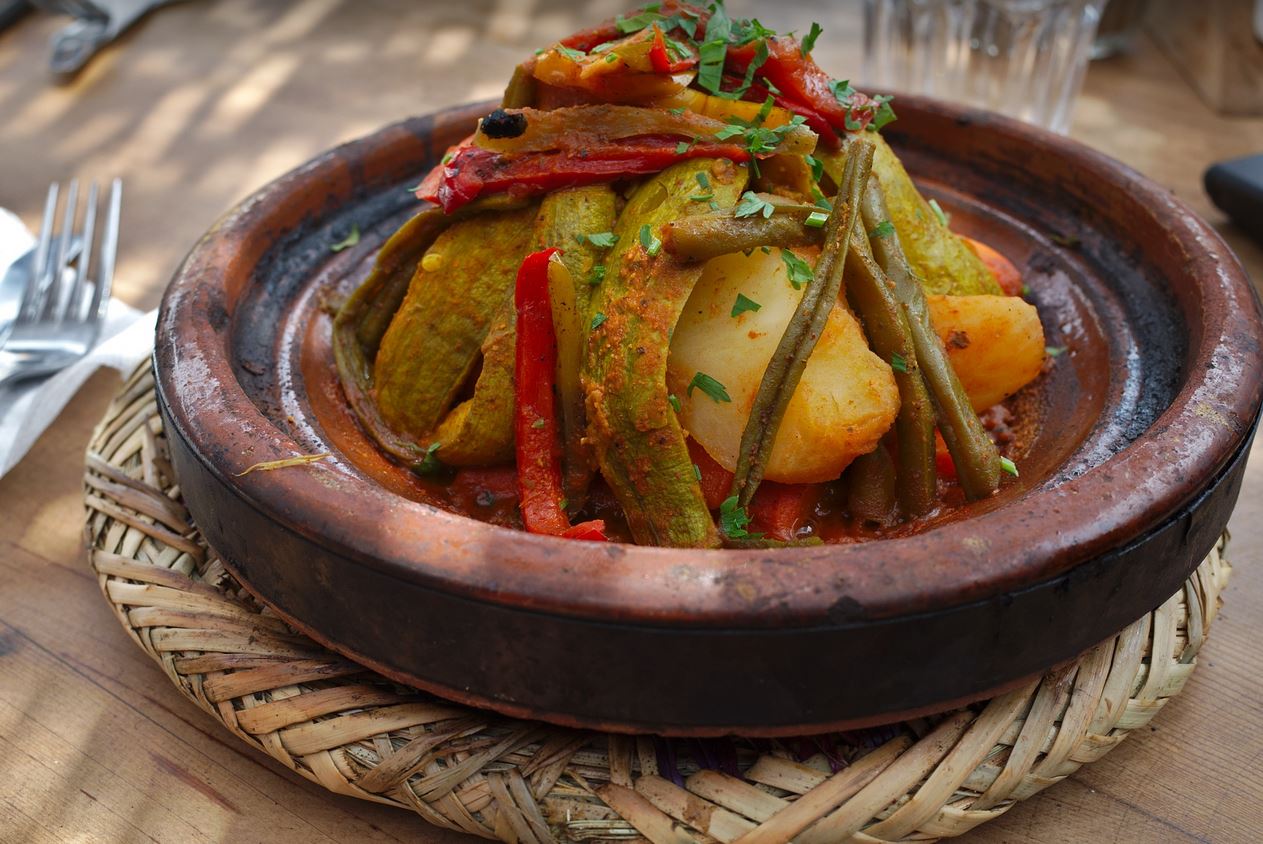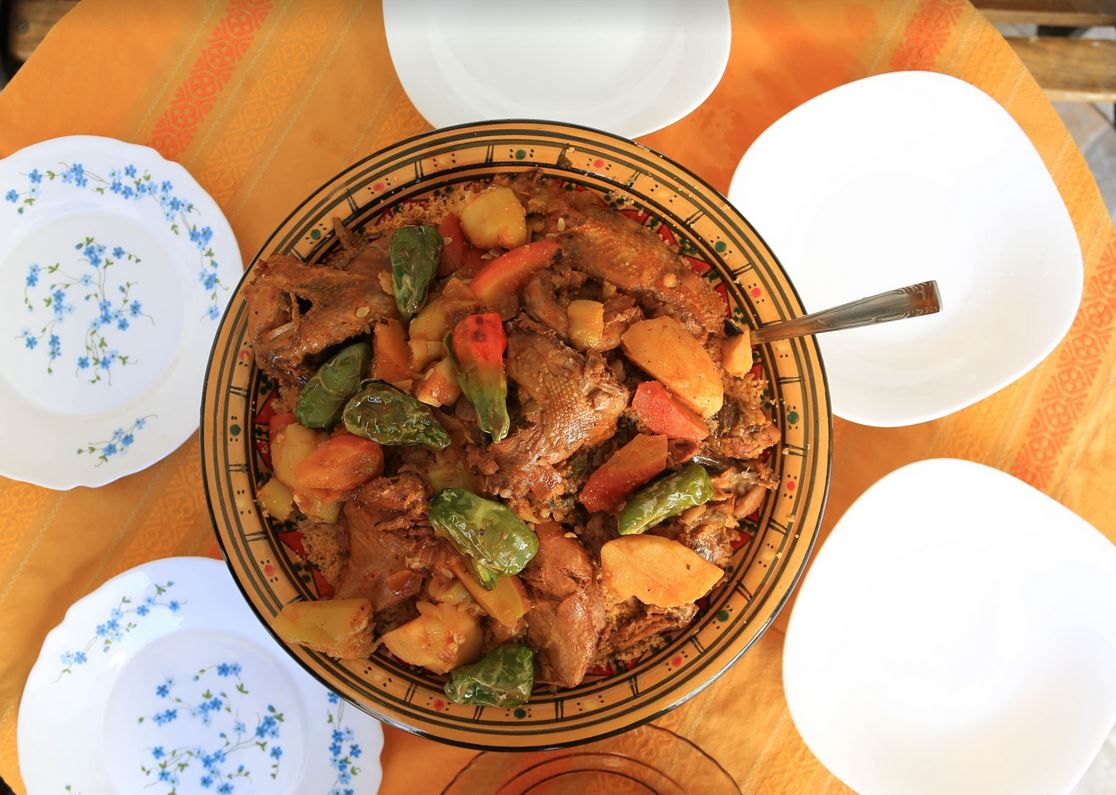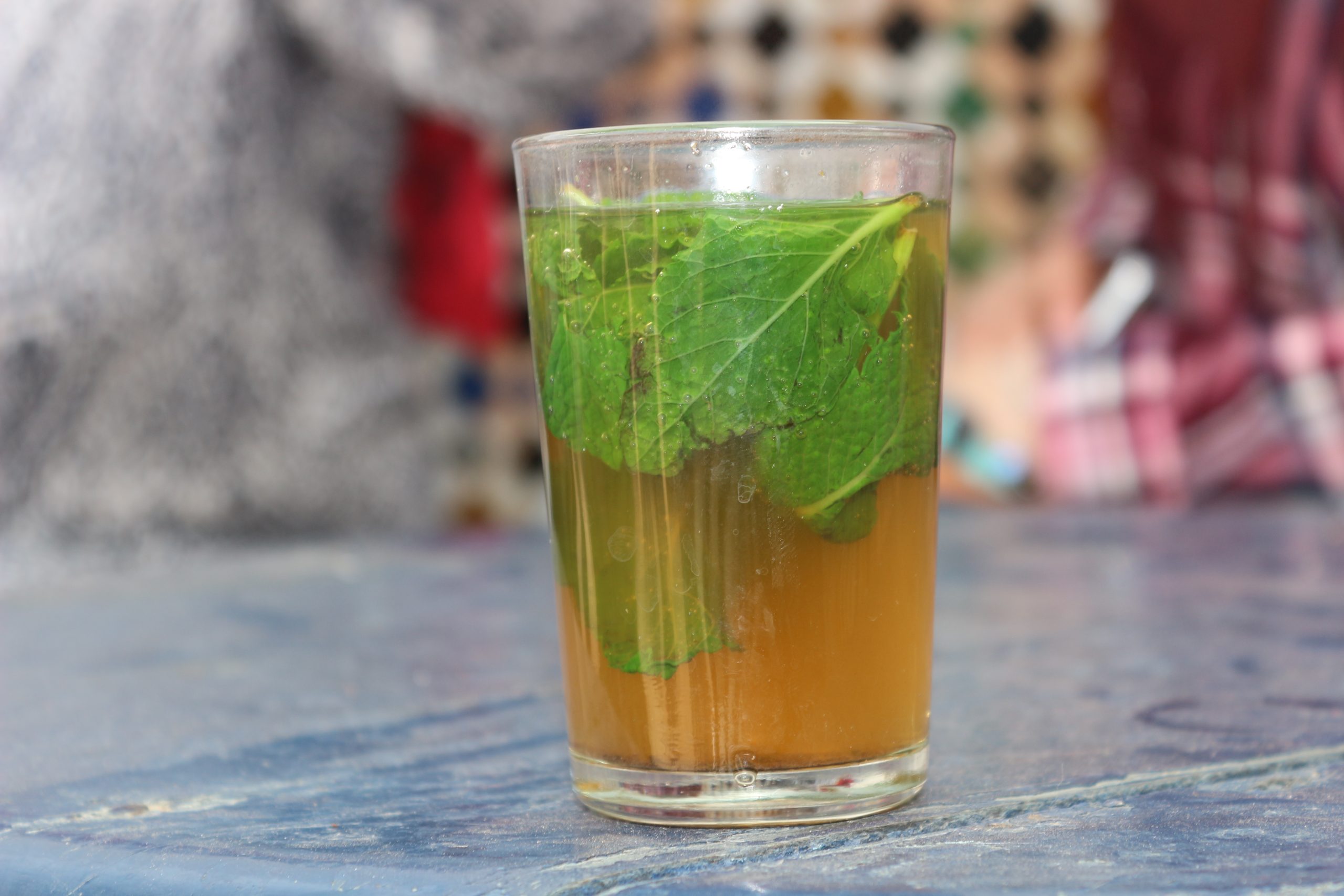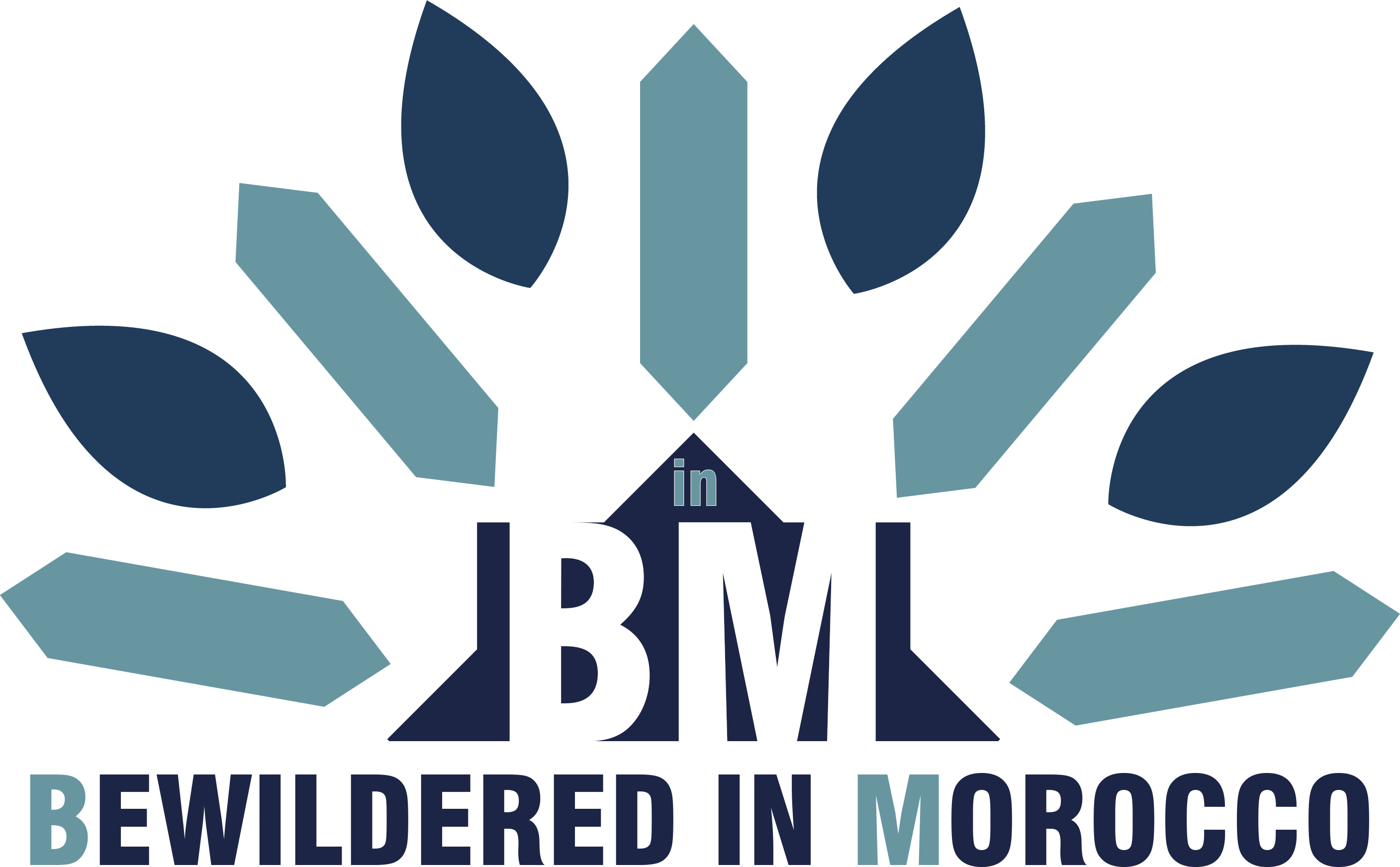Experiencing Moroccan food for the first time is a gateway to the country’s vibrant culture, steeped in history, hospitality, and a love for bold, aromatic flavors. Whether you’re stepping into a bustling souk, dining in a traditional riad, or exploring street food stalls, the culinary journey in Morocco promises an unforgettable adventure.
The First Encounter: Setting the Scene
Picture yourself walking through the lively streets of Marrakech or Fez. The air is heavy with the scent of spices—cumin, cinnamon, and saffron mingle with the aroma of freshly baked bread. Vendors call out their wares, from pyramids of vibrant spices to fragrant tagines bubbling in clay pots. For many, the adventure begins with the quintessential Moroccan dishes: tagine and couscous.
Tagine: A Symbol of Moroccan Cuisine

A tagine is more than just a dish; it is an experience. This slow-cooked stew, named after the conical clay pot in which it is cooked, offers a harmonious blend of flavors. Common options include:
Lamb with prunes and almonds: Sweet and savory, this dish features tender lamb cooked with dried prunes and a hint of cinnamon, creating a luscious sauce.
Chicken with preserved lemons and olives: A zesty favorite, this tagine balances tangy lemons with briny olives, served over a bed of tender chicken.
Accompanying your meal is often khobz, the hearty Moroccan bread used to scoop up every flavorful bite.
Couscous: A Friday Tradition

Couscous, often reserved for Fridays, is Morocco’s beloved dish. Fluffy grains of semolina are steamed to perfection and topped with a medley of vegetables, meat, and a delicate broth. The meal is a communal experience, often served in a large dish for everyone to share. Many first-timers are surprised by its light texture and the way it absorbs the flavors of the stew it accompanies.
Street Food Adventures
For the adventurous foodie, Morocco’s street food is a must-try. Here are some staples:
Msemen: A flaky, pan-fried bread often served with honey or a savory filling.
Briouates: Fried pastries filled with spiced meat, cheese, or sweet almond paste.
Snail soup: A flavorful broth infused with herbs, offering a unique taste of Moroccan street culture.
Sweet Endings
No Moroccan meal is complete without dessert. Savor traditional sweets like:
Chebakia: Sesame-coated pastries soaked in honey, perfect with a cup of mint tea.
Kaab el Ghazal: Crescent-shaped cookies filled with almond paste and subtly flavored with orange blossom.
Mint Tea: The Heart of Hospitality

Throughout your journey, you’ll encounter Moroccan mint tea, often called “Berber whiskey.” This sweet and refreshing drink is served in ornate glasses and symbolizes Moroccan hospitality. Watching the tea poured from a height is an art form in itself.
Tips for First-Timers
Be Open to Sharing: Moroccan meals are communal, and sharing enhances the experience.
Try New Flavors: The mix of sweet and savory might be unfamiliar but is incredibly rewarding.
Engage with Locals: Ask about the dishes and their history; Moroccans are proud of their cuisine and love sharing stories.
Trying Moroccan food for the first time is about more than just flavors; it’s a cultural immersion. The spices, the communal dining, and the warm hospitality all come together to create a feast for the senses. Whether you’re savoring a tagine, enjoying the sweetness of a chebakia, or sipping mint tea, each bite and sip tells a story of Morocco’s rich heritage. So, grab a plate, dive in, and let the flavors transport you to a land of culinary magic.
